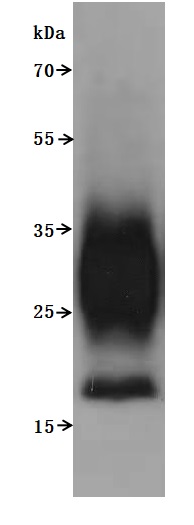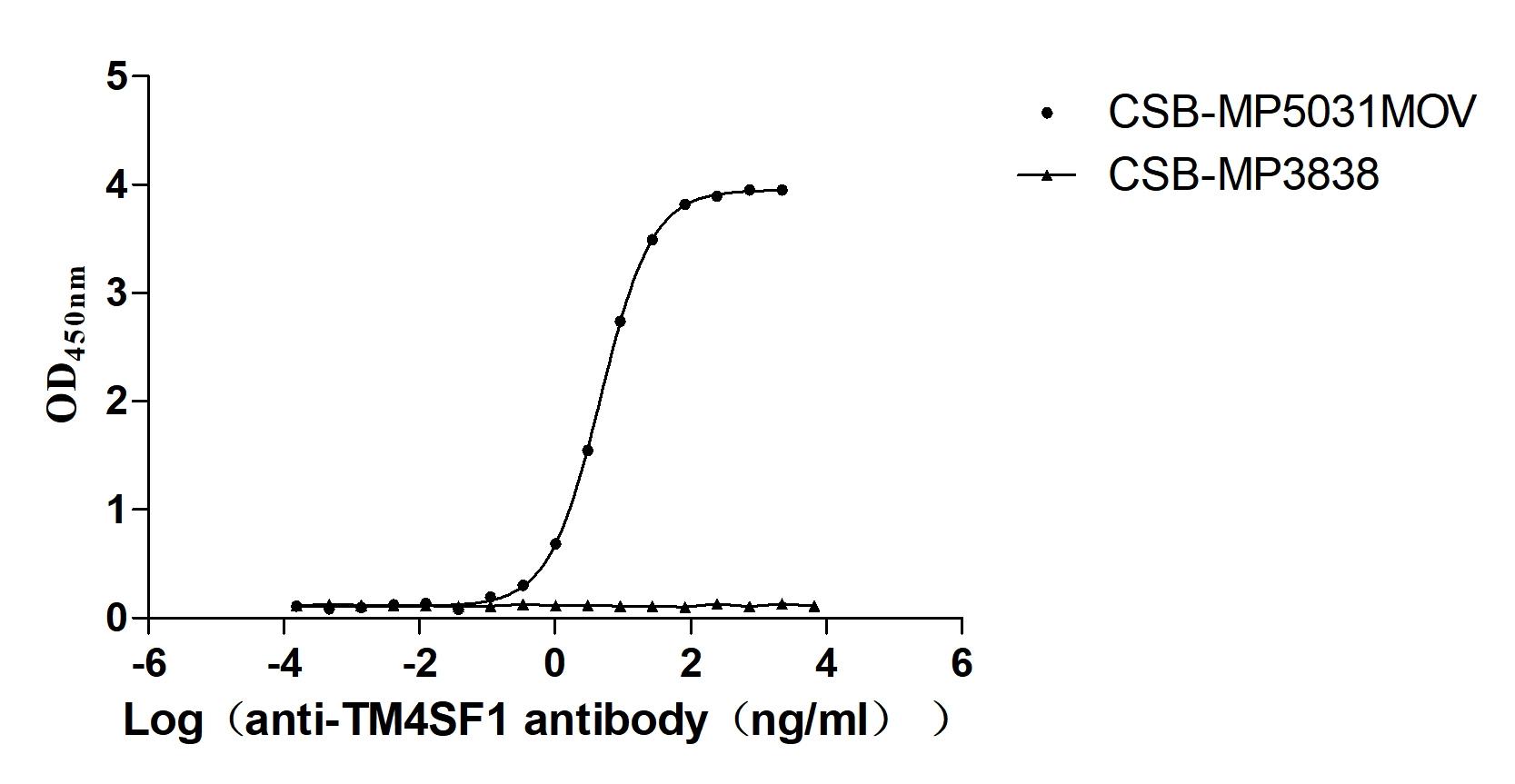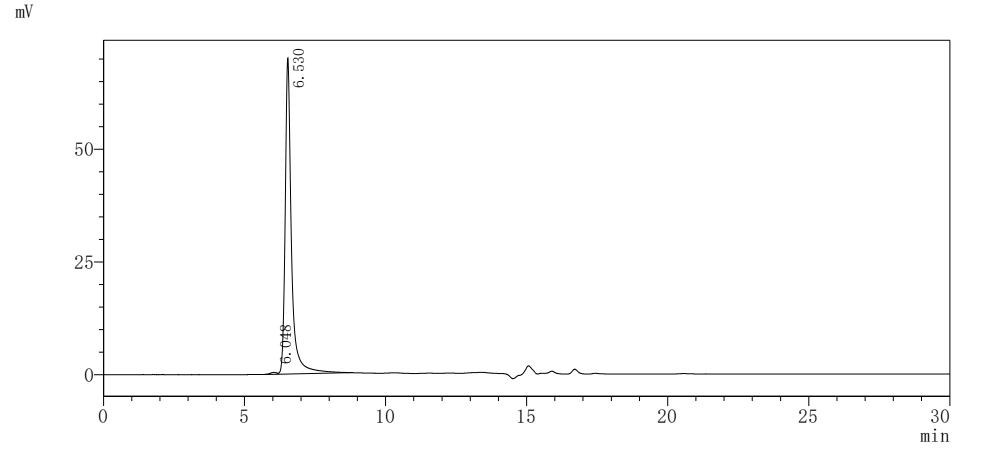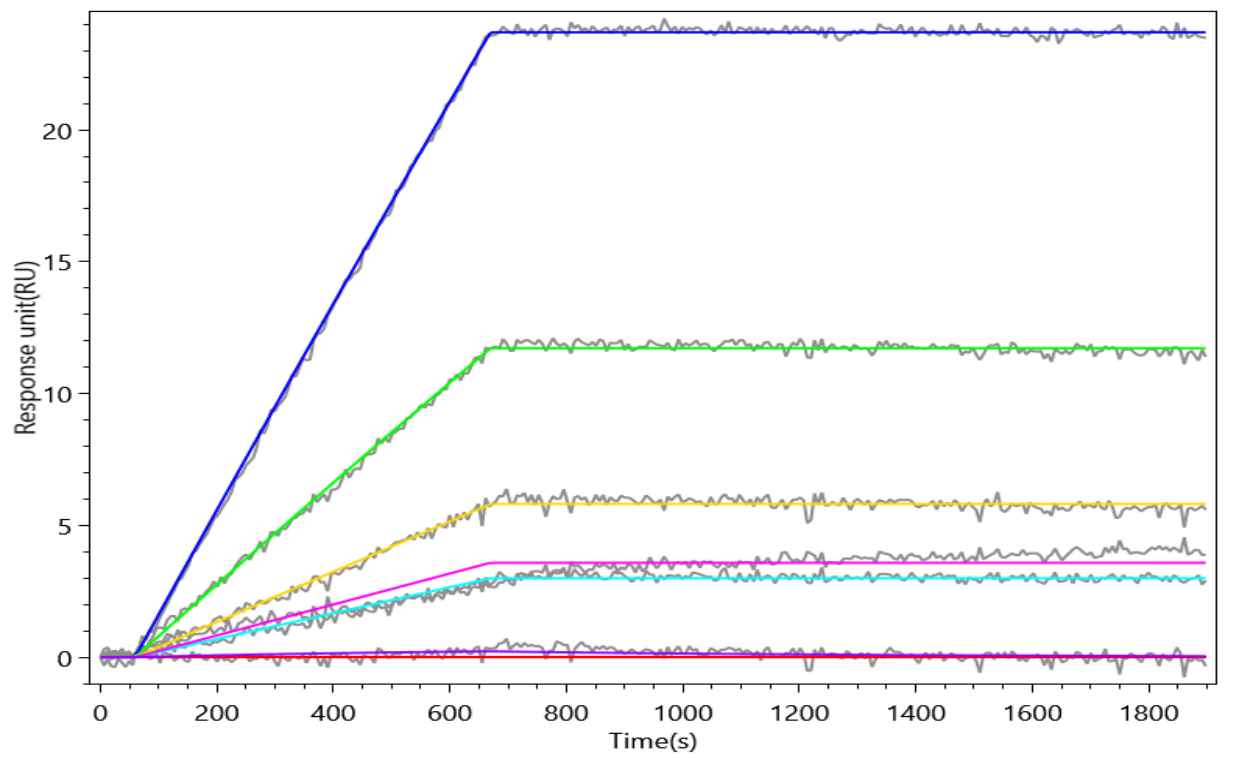This recombinant Macaca fascicularis transmembrane 4 L6 family member 1 (TM4SF1) protein encompasses the full-length TM4SF1 (residues 1-202), expressed in mammalian cells with a C-terminal 10×His tag. The protein exhibits exceptional purity (>95% by SEC-HPLC) and low endotoxin levels (<1.0 EU/μg, LAL method). Its bioactivity has been measured through functional ELISA, demonstrating specific binding to anti-TM4SF1 recombinant antibody (CSB-RA023615MA1HU). The EC50 is 4.480–4.930 ng/mL, with VLPs (CSB-MP3838) as negative controls. Mammalian expression ensures native glycosylation and structural fidelity critical for TM4SF1's role in cellular adhesion, tumor progression, and extracellular matrix interactions. The His tag enables efficient purification without disrupting functional epitopes. Presented as lyophilized powder, this preparation is optimized for stability and reconstitution. This recombinant TM4SF1 protein is recommended for investigating TM4SF1-mediated oncogenic signaling, metastasis mechanisms, and therapeutic antibody development in cancer research.
The TM4SF1 protein, specifically from Macaca fascicularis (cynomolgus macaque), is a member of the tetraspanin family that plays critical roles in various cellular processes. This protein is primarily known for its involvement in cellular signaling, adhesion, and membrane organization [1]. TM4SF1 is integral to the formation of tetraspanin-enriched microdomains on the cell surface, facilitating interactions between different membrane proteins, including integrins and growth factor receptors. This organization is crucial for biological functions like cell proliferation, differentiation, and immune responses [2].
The cynomolgus macaque, as a model organism, provides valuable insights into the functions of human analog proteins due to their genetic and functional similarities. Studies suggest that TM4SF1 is involved in modulating cellular responses during immune reactions [3], and its expression has been linked to various pathological conditions, including cancer [4]. For instance, TM4SF1 is hypothesized to influence the metastatic capabilities of cancer cells, contributing to our understanding of tumor biology. Furthermore, expression patterns of TM4SF1 in cynomolgus macaques may reflect human diseases, supporting its utility in translational research [2].
Moreover, the interaction of TM4SF1 with viral components has been explored in the context of viral infections in primates. Its role in facilitating the entry of viruses into host cells through tetraspanin microdomains underscores the significance of TM4SF1 in infectious diseases [1]. This characteristic positions it as a potential target for therapeutic interventions aimed at controlling viral infections in macaques, which serve as essential models for studying human diseases, particularly in virology and immunology [5].
References:
[1] J. Estes, S. Wong, & J. Brenchley. Nonhuman primate models of human viral infections. Nature Reviews Immunology, vol. 18, no. 6, p. 390-404, 2018. https://doi.org/10.1038/s41577-018-0005-7
[2] S. Kanthaswamy, J. Ng, et al. The genetic composition of populations of cynomolgus macaques (macaca fascicularis) used in biomedical research. Journal of Medical Primatology, vol. 42, no. 3, p. 120-131, 2013. https://doi.org/10.1111/jmp.12043
[3] S. Laila, D. Astuti, I. Suparto, E. Handharyani, T. Register, & D. Sajuthi. Atherosclerotic lesion of the carotid artery in indonesian cynomolgus monkeys receiving a locally sourced atherogenic diet. Veterinary Sciences, vol. 9, no. 3, p. 105, 2022. https://doi.org/10.3390/vetsci9030105
[4] H. Darusman, S. Mariya, et al. Spontaneous expression of the gene of ki67 and p53 in cynomolgus monkeys infected with papillomavirus. Veterinary World, p. 962-967, 2022. https://doi.org/10.14202/vetworld.2022.962-967
[5] J. Uli, C. Yong, et al. Rna sequencing (rna-seq) of lymph node, spleen, and thymus transcriptome from wild peninsular malaysian cynomolgus macaque (macaca fascicularis). Peerj, vol. 5, p. e3566, 2017. https://doi.org/10.7717/peerj.3566










